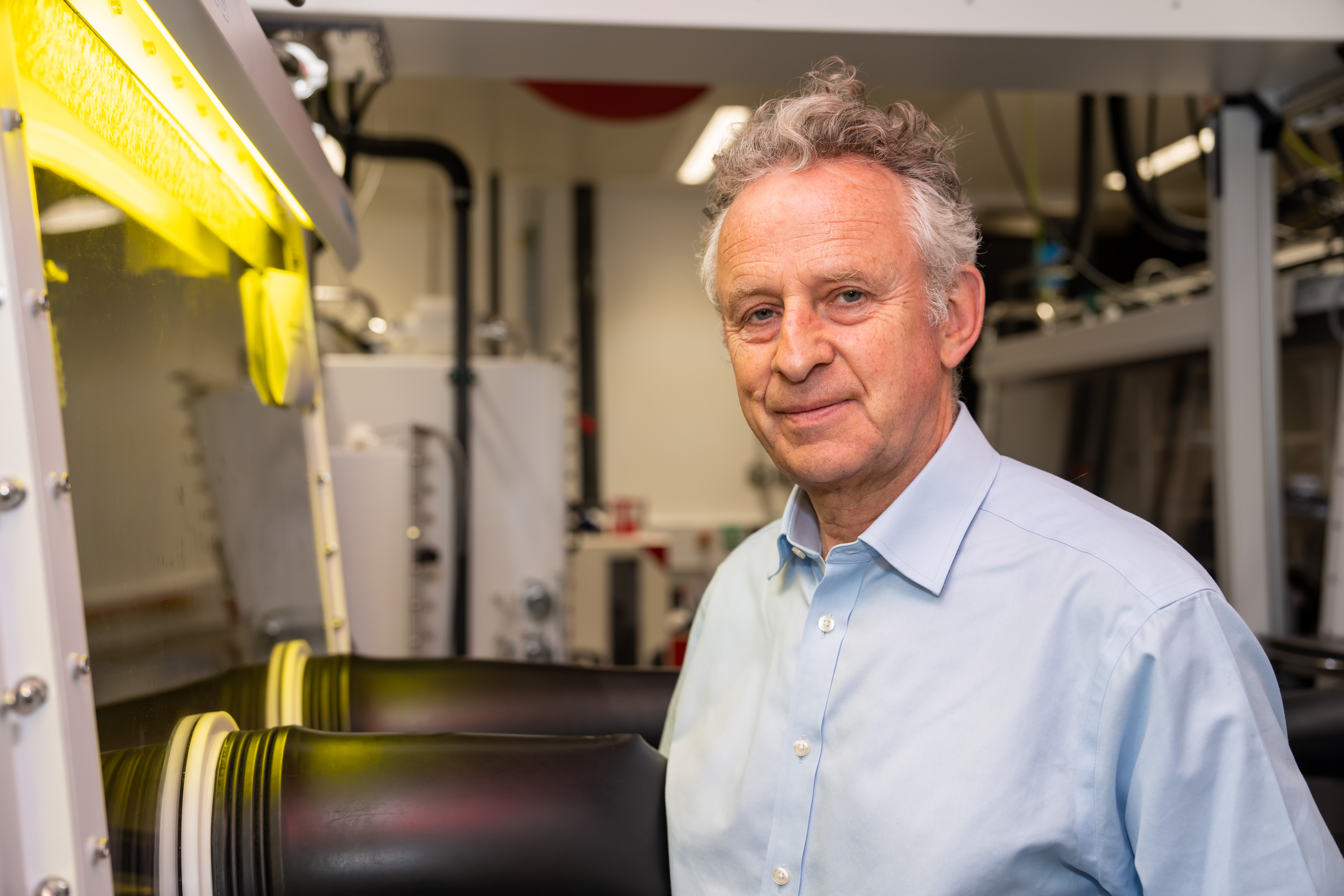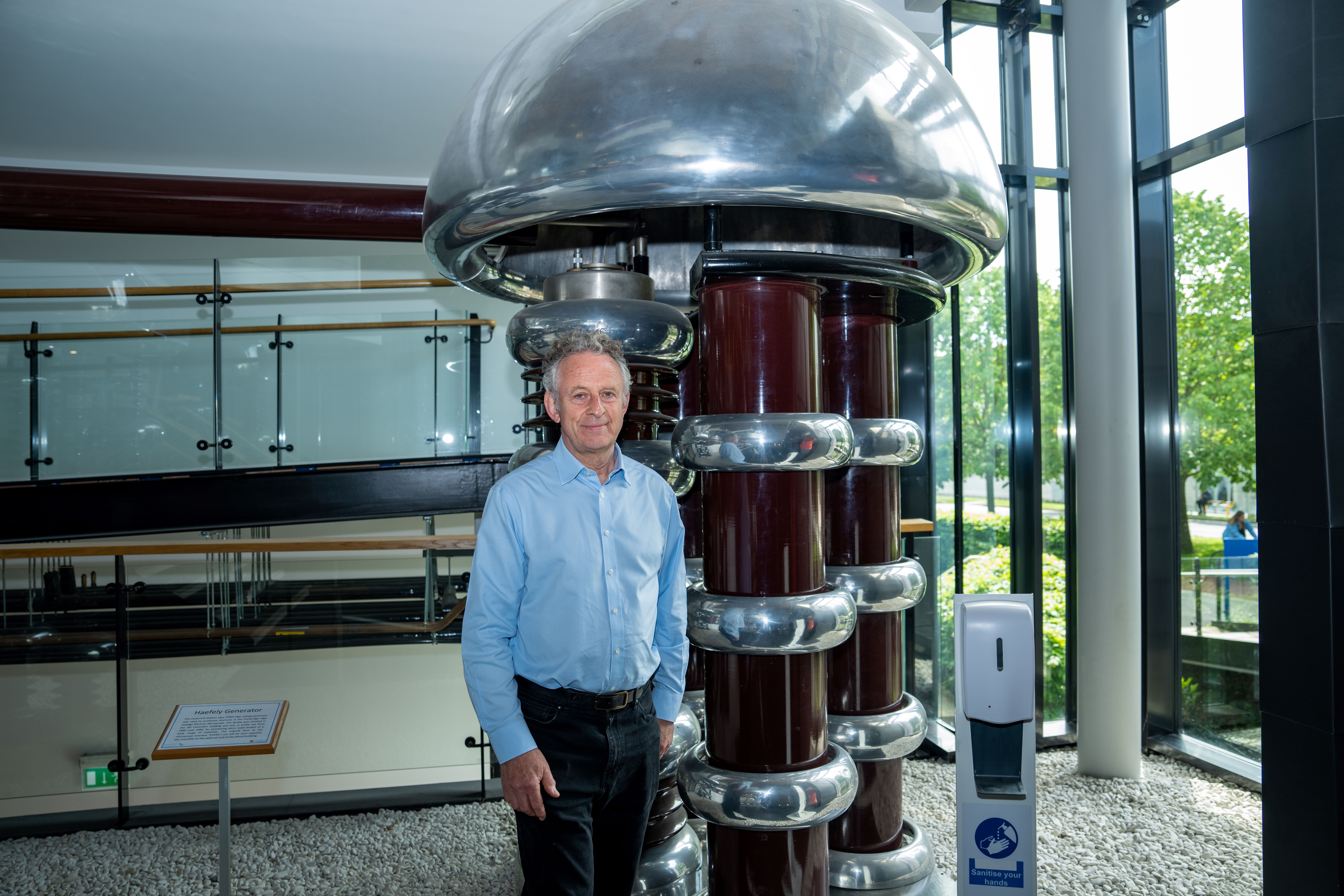Reasons to be cheerful: the scientist pioneering solar technology to tackle the climate crisis
“Today I am a huge optimist. The fact that wind – even offshore – and solar are cost-comparable against fossil fuel for new electricity generation is a miracle”
In the latest article of our series focusing on energy, we profile Professor Sir Richard Friend, Fellow of St John’s, whose research is transforming the efficiency of solar cells, dramatically boosting the prospects of cheap electricity powered by the sun.
In an age when efforts to reverse the climate crisis are fraught with challenges, Professor Sir Richard Friend – physicist and expert on solar cells – delivers a charge of that all too rare resource: optimism. “We are reconfiguring energy. We have to because we have to hit net zero,” he says. “A decade ago I was very depressed because I didn't think it was affordable: wind and solar were too expensive and it used a lot of energy to make them in the first place.
“Today I am a huge optimist. The fact that wind – even offshore – and solar are cost-comparable against fossil fuel for new electricity generation is a miracle, it’s wonderful. The challenge is how do we go faster, how do we scale up quickly enough?”

The can-do attitude is characteristic of a scientist who lives very much in the world, as interested in cooling towers as ivory ones. Over a long career, 25 years of it as the Cavendish Professor of Physics at Cambridge, Richard’s breakthrough discoveries on the interactions between molecules, light and electromagnetic forces have led to the development of now-ubiquitous technologies such as organic LEDs and display screens. By 2003, when he received a knighthood for services to physics, he had already founded two companies: Cambridge Display Technology and Plastic Logic. An early investor in one of his start-ups was the fund manager for Phil Collins and his band Genesis (the musicians were very optimistic about the prospects for the technology, and turned out to be friendly and supportive investors, according to Richard).
Intriguingly, Richard’s work today on solar cells rests on the same process identified in his ground-breaking early findings – but in reverse. Both focus on the electronic properties of carbon-based molecular semiconductors: the ‘third way’ substances of the material world, possessing properties in between normal conductors, such as metals and insulators, which block electric current. Initially, his research explored the semiconductors’ light-emitting properties when a current is passed through them, using them in a range of devices including smartphone displays and LEDs. But the same technology also worked ‘backwards’, turning light energy into electricity. The possibility emerged of using the new materials to improve the efficiency of solar cells, which harvest the sun’s rays to generate power.
“Solar is vastly important and will become more so. By 2050 I would be amazed if big inroads have not been made”
The secret of the new semiconductors exploited by Richard and his team is their capacity to allow new solar cell architectures that can extract significantly more energy from the same amount of sunlight than just using conventional silicon solar cells alone. The latter absorb the energy in sunlight (carried by massless particles called photons) efficiently in the infra-red part of the solar spectrum, but when it comes to the higher energy particles in the visible spectrum their efficiency drops to no more than 25%. What is needed is a set of new semiconductors that can be tuned to absorb different colours of light. New semiconductors such as the metal halide perovskites or carbon-based organic molecules (which absorb light in a similar way to plants during photosynthesis) now show real promise.
These new materials, combined with today’s silicon, promise to make solar power cheaper and more efficient. They can work in ‘tandem’ architectures where higher energy visible photons are absorbed in a top layer solar cell, and the infra-red photons pass through and are absorbed in a silicon solar cell below – an approach that can raise overall efficiency by 40% or more. This increase in system efficiency is crucial when the majority of the costs of panels, such as the structure and the frame, are fixed. “Solar is vastly important and will become more so,” Richard says. “By 2050 I would be amazed if big inroads have not been made. Why would we stop at 25% efficiency?” The result will benefit everyone because any process that can be powered by electricity will come down in cost. “It’s making things cheap enough that they are democratised.”
With years of entrepreneurial experience, he is pragmatic about the fact that developments serving the greater good may emerge from niche, even luxury, products. New materials revolutionising solar cells, for example, were commercialised because they permitted the use of thin, power-efficient OLED (organic, light-emitting diode) smartphone displays – products where hefty profits can offset high development costs. “Often a technology that might have been generated for the few and the rich ends up being available far more broadly. It is very hard to make a clean separation between technology that is not absolutely essential and maybe undesirable and stuff that later turns out to be indispensable."
The lithium-ion battery, he points out, was developed by Sony for the ‘Walkman’ tape cassette player, not by the automotive industry, who picked it up when costs had fallen. The Danish company, Ørsted, one of the largest global operators of off-shore wind, and committed to zero carbon by 2025, draws on its offshore engineering competence developed when it was an oil and gas company.
It’s no surprise that Richard is inspired by the exploratory tradition of 18th century natural philosophers: setting out boldly to examine the world outside the walls of the lab, rather than tweaking existing theories. Sir Isaac Newton is a hero, together with Sir Christopher Wren (an anatomist, astronomer and mathematician-physicist as well as an architect) and the microscope-designing 17th century polymath Robert Hooke. He is fascinated by ‘the extraordinary ability of those societies to to observe the physical world, and just see things with new eyes. So many things were changed. New instruments were critical. Generally, when you make a new instrument and measure something that hasn't been measured before, the predictions you made turn out not to be half as exciting as what turns out to be the case. When you are confronted with observations you didn’t expect, you are sufficiently disconnected from a presumption as to what you’re looking at that you can be far more creative. I think since the Enlightenment science has had a remarkable effect on society.”
“Nature always turns out to be more interesting than we expected it would be, and it has been a series of surprises, usually positive”

Three centuries on, and the switch to net zero carbon will bring challenges for society. Nevertheless, Richard argues, there is a real prospect that living standards will not be dragged down, as the practical consequences of ever cheaper solar energy kick in. “As renewable generation drops below the cost of fossil fuels, it is simple economics that will stop fossil fuels being burned. Low cost renewable electricity can then drive decarbonisation across much of the economy.“ He gives the example of ammonia – a component of fertilisers that is made from nitrogen in the air and hydrogen, currently produced from fossil fuels. With cheap electricity, hydrogen can come from water (via electrolysis) instead, with lower costs and reduced emissions. “We have a set of options now which many of us didn’t think would be around… The trajectory of what has happened with technology is completely beyond anyone’s reckoning. There are plenty of challenges but so there always were. The surprises that turn out to be available to us to use will keep coming.”
Despite such a rosy outlook, he acknowledges, ‘there is a serious risk we will be pessimists now, partly because decisions are taken by people who are too old. The big problem with the environment is that most of the time we feel powerless, that our individual actions, though worthy, are not going to move the needle, but we must still do it’. The UK government, he argues, should be bolder in supporting its talented scientists and engineers, and in following countries such as Denmark in investing heavily in renewable technology. “It is the second industrial revolution that is happening, the re-engineering of energy away from fossil fuels to renewables, and the UK is playing a comparatively small part in it.”
Would he then choose IT, or perhaps AI, as his focus if starting out on his career today? The answer is no: he loves the particular intersection he occupies on the scientific Venn diagram too much. “I’ve chosen an area where I sit on the fringe of engineering, physics and chemistry. I love that. It means you can be an amateur at all of them and get away with it. You declare your ignorance at all possible stages, and you can say things that are probably silly most of the time but you are thinking in a different way, and it’s very creative.” The excitement of ‘unexpected, unplanned’ discoveries remains thrilling. “Nature always turns out to be more interesting than we expected it would be, and it has been a series of surprises, usually positive.”
For all his enthusiasm for Enlightenment observation, Richard admits: “There is something of the alchemist in me. I like that intersection between chemistry and things that defy what materials ought to be able to do. I’m still there. The materials world by definition is unpredictable. The equations are not solvable, everything is approximate. By the time you’ve gone beyond the hydrogen atom you can’t solve any quantum mechanical system completely accurately, so phenomena are often unpredictable, and very occasionally inexplicable.”
Cambridge’s Maxwell Centre, within the Cavendish Laboratory, with its open atria and modern white walls, feels an unlikely site for alchemy. But then, while base metal may not yet be transmuted into gold, the conversion of sunlight into a fuel to power our lives and – we hope – protect our planet, is a transformation that may prove more precious still.
Published 2/6/2023